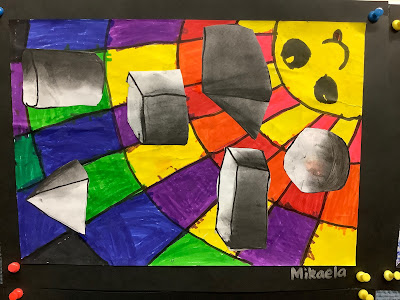 |
| Grade 1 Seagull Artwork |
Lesson Background:
Last week we had a transition morning with our new classes for next year. I met my gorgeous new Year 2 class for 2023 and they were just delightful! We spent the morning doing some Summer-themed activities including reading Kylie Howarth's great picture book "Chip" and then creating these artworks based on the art project I saw here: https://artprojectsforkids.org/draw-a-seagull-2/
Lesson Materials (per student)- 1 sheet A4 art paper
-1 lead pencil
- watercolour paints, thin brush and water
- A strip of yellow dishwashing sponge (for a chip)
- a gluestick
- A black texta or sharpie
Lesson Steps:
1. Model how to draw the seagull step-by-step while students follow along with a lead pencil on their art paper. Encourage them to draw very lightly so any mistakes are easily rubbed out and don't show through the watercolour paint (a little issue some of my students had this time).
2. Show students how to use the watercolour paints to colour in their art, including a light grey shadow down the seagull's neck and along the clouds. Encourage them to use light colours first (yellow sand, orange legs and beak) before the darker colours, so that their colours stay clean and bright.
3. When dry, outline with black texta/sharpie.
4. Use gluestick to stick the sponge between the seagull's beak.
Student Artworks:
 |
| My sample artwork |
 |
| Another student artwork (before the chip was added!) |
 |
| Another student artwork (before the chip was added!) |



























.JPG)





















